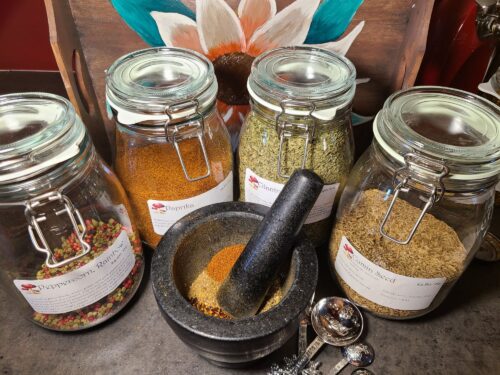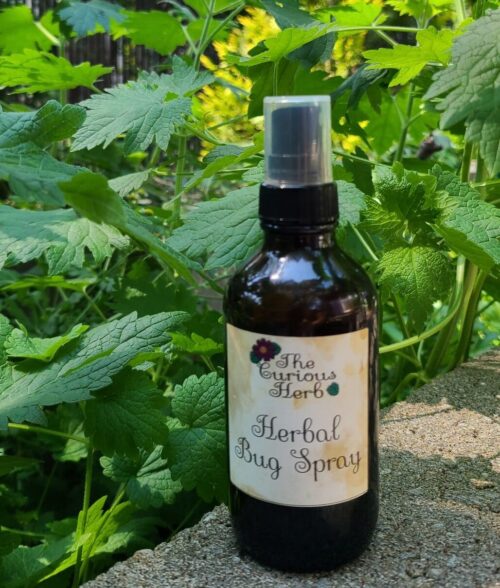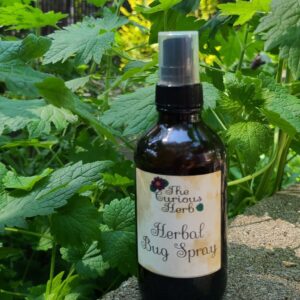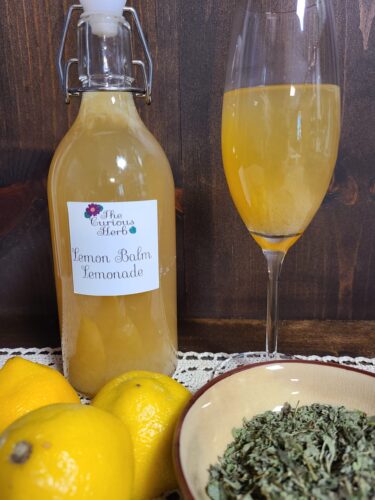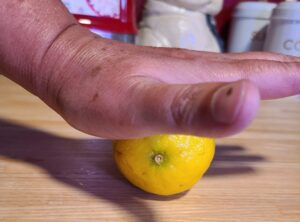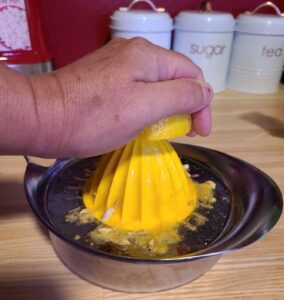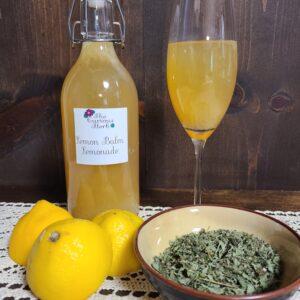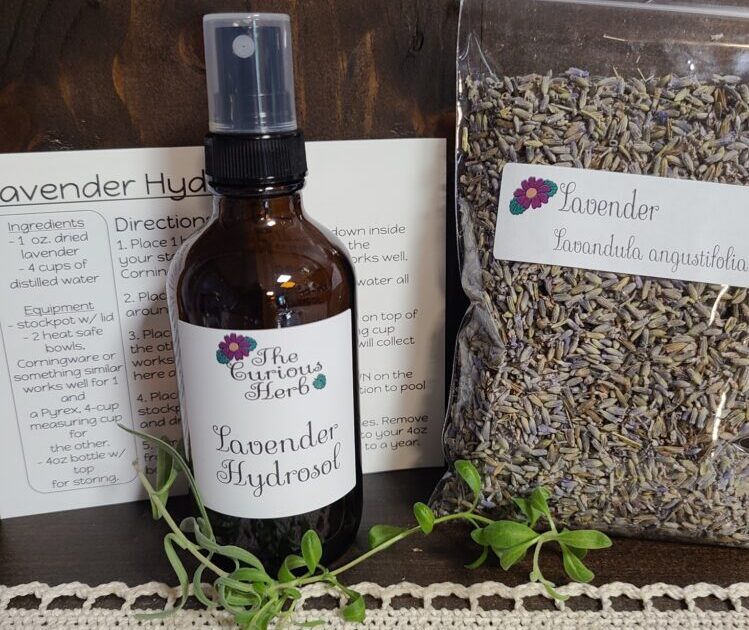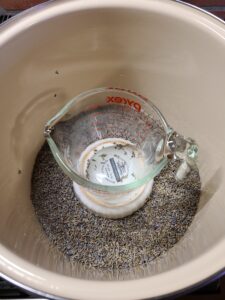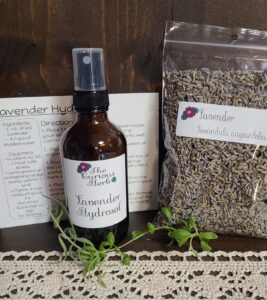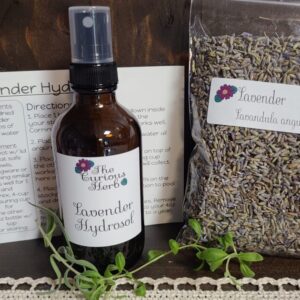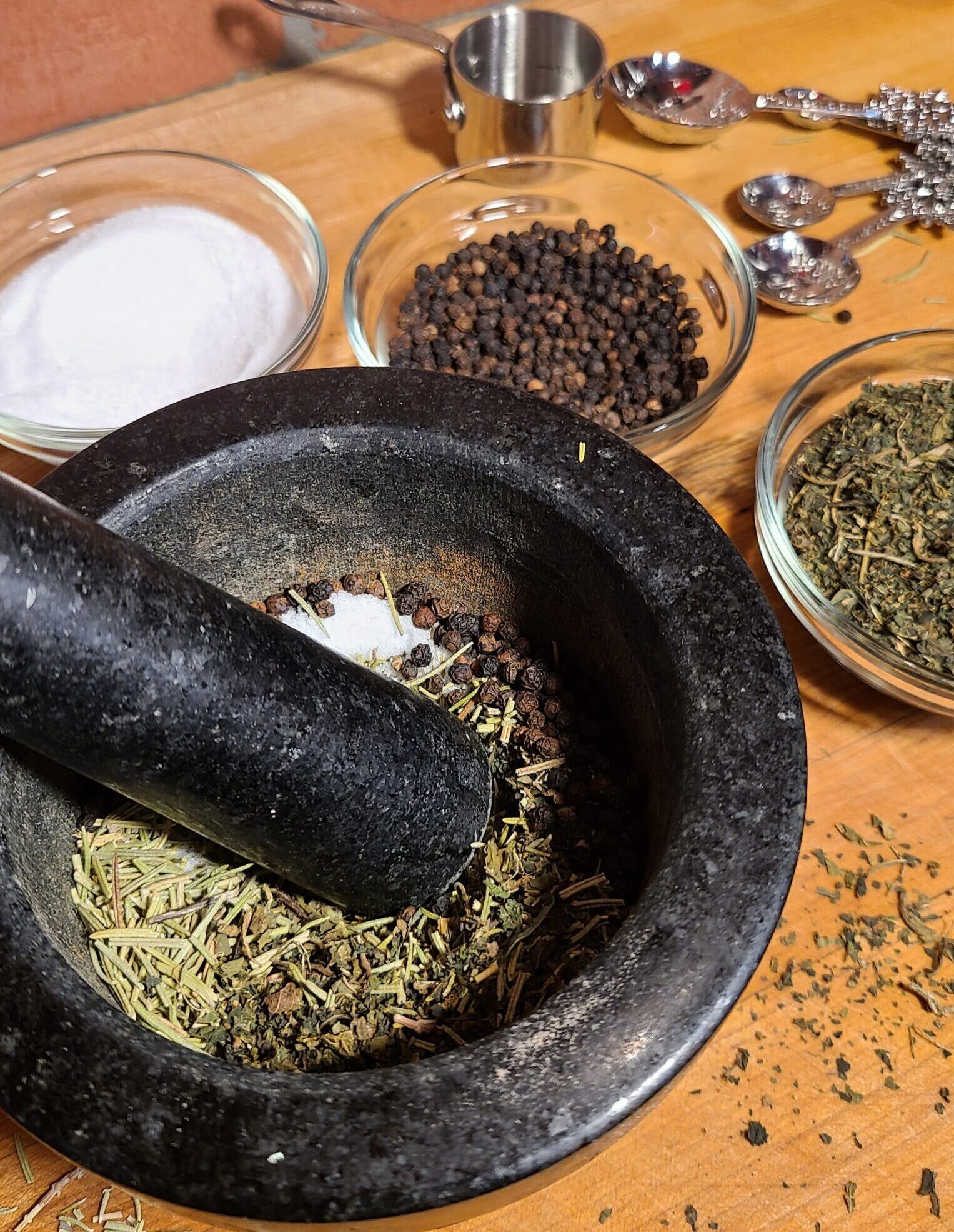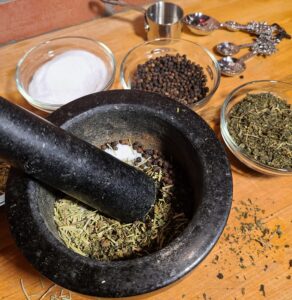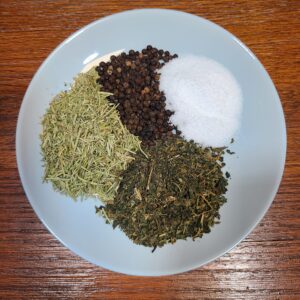Mexican Magic Seasoning Blend
When I was in high school, my family still managed to eat dinner together most nights. It was my sister, my parents, and me. I loved our family dinners. One of my favorite family dinners was when my dad made nachos. He would make one huge platter of nachos. We would spread a tablecloth out on the floor, and we would all sit around the platter and eat together. It was sort of a nacho picnic in the living room. Best family dinner EVER!
A million years later, I still love nachos for dinner. Early on in our relationship, I introduced my husband to “Kinerk Nachos”, and he absolutely loves it too. Making one big platter of nachos isn’t in the cards for us anymore as I am a vegetarian, and my husband is not. I absolutely love cheese and completely smother my nachos with pepper jack, but my husband is definitely not a cheese lover so typically puts just a couple shreds of cheese on his. That, however, is one of the great things about nachos for dinner. It can be completely customized to the eater. When we have friends and family over for nacho night, I set it up sort of buffet style. Everyone gets an oven-safe dish and fills it with tortilla chips, chili, and cheese. We then pop this in the oven set on Broil until the cheese is all nice and melty. Then you get to put whatever toppings you want on your nachos. This can be salsa, shredded lettuce, diced tomatoes, sour cream, guacamole, green onions, or anything else you love on nachos.
To make this a quick and easy dinner, I always have my own special Mexican Seasoning Blend on hand. That way I’m not searching for a bunch of different spices and trying to get the ratios right. I have perfected my blend over the years so it’s exactly how my husband and I like it. The beauty of making your own blends is that they can be just exactly what you like.
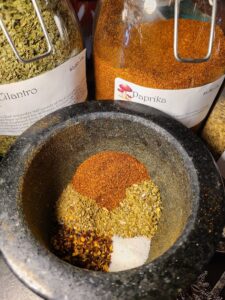
While this Mexican seasoning blend is perfect for nachos, it can also be used in and on a million other things. I love it for tacos, fajitas, and quesadillas. It works great with mushrooms, beef, chicken, pork, and shrimp (we aren’t fish eaters, so I’ve never tried it that way) (probably delicious though). I love it ground up really fine and sprinkled on popcorn. I also mix sour cream and salsa together with this blend to make a fabulous chip and veggie dip. The possibilities really are endless so you better blend some up today!
Here’s my recipe for Traci’s Mexican Magic. Please feel free to tweak it to suit your specific taste. And don’t forget to write down your recipe for your customized Mexican seasoning blend so you can remember what you put in it. I can’t tell you how many times I made something awesome and then could never recreate it. So frustrating!! You can purchase all of the herbs you need for this recipe in my online herb shop here.
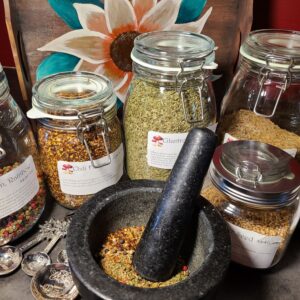
Mexican Magic Seasoning Blend
Equipment
- 1 Spice Grinder Needed only if you are using whole not ground herbs.
Ingredients
- 2 tbsp Cumin Seeds
- 1 tbsp Paprika
- 1/2 tbsp Oregano
- 1/2 tbsp Crushed Red Pepper
- 1/2 tbsp Coriander
- 1/2 tbsp Dried Cilantro
- 1/2 tbsp Peppercorn (any color is fine)
- 1/2 tbsp Salt
Instructions
- Grind any spices that are not already ground. You want all ingredients to be about the same consistency.
- Mix all ingredients together.
- Store in an airtight container. Don't forget to label the container with the ingredients, measurements, and date.
Notes
- Cayenne pepper
- Smoked salt or paprika
- Onion powder
- Garlic powder
